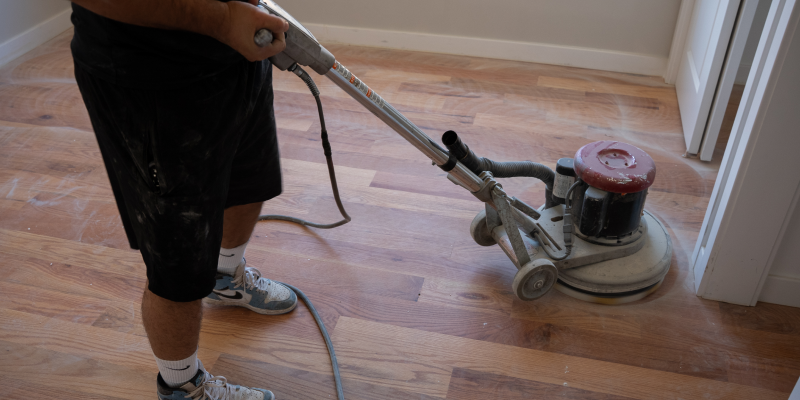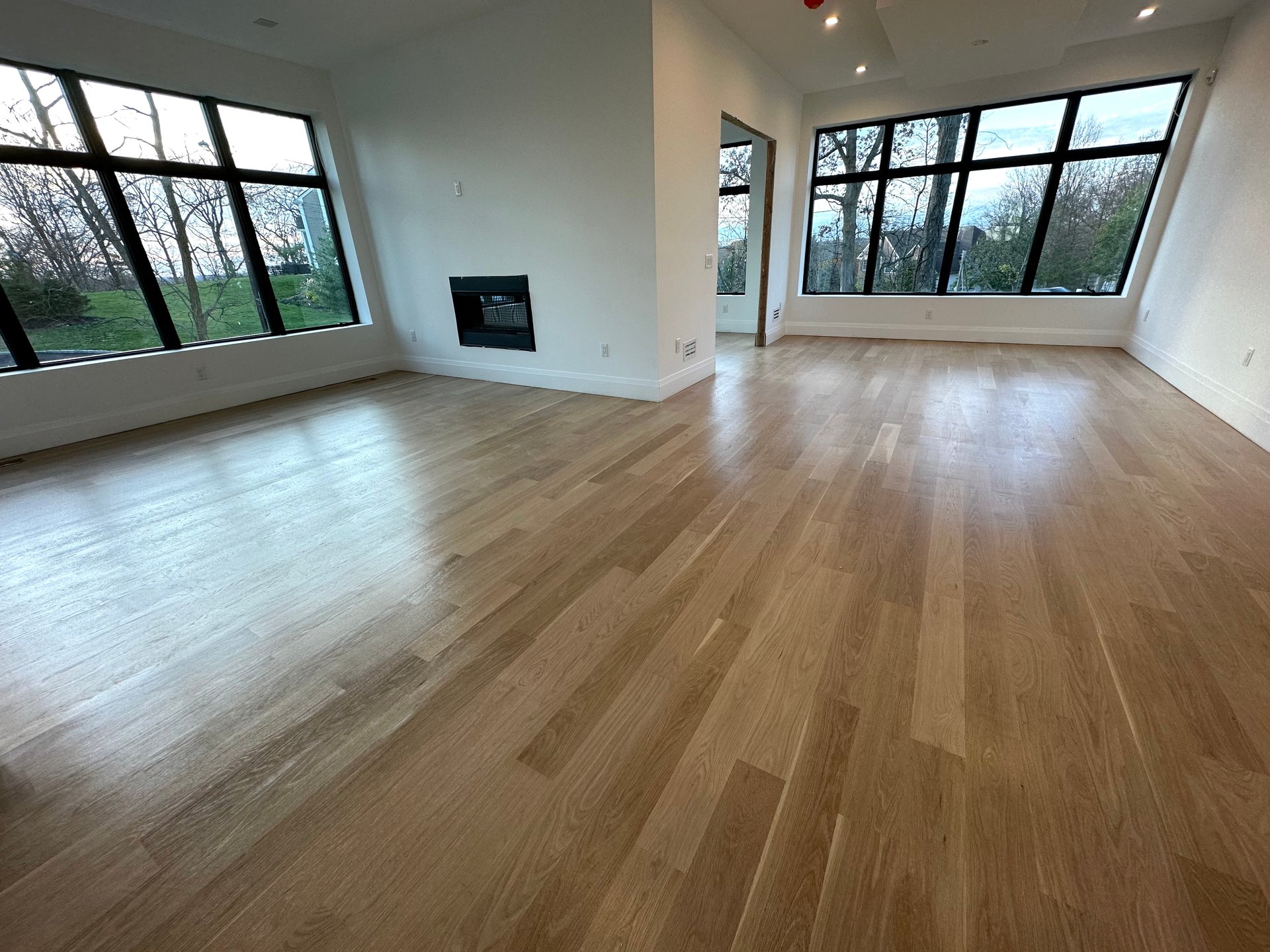Planning & Choices

The Ultimate Guide to Flooring Solutions: Types, Trends, and Durable Options for 2026
Flooring solutions are the combination of materials, installation methods, and performance attributes that determine how a floor looks, lasts, and functions in a particular space. This guide explains the major flooring materials in use in 2026, current design and sustainability trends, room-specific selection criteria, installation and maintenance best practices, and practical budgeting steps to make confident, cost-effective choices. Many homeowners and commercial buyers struggle to balance aesthetics, durability, moisture resistance, and lifecycle cost; this article shows how to weigh those factors and pick the right solution for kitchens, bathrooms, high-traffic areas, and specialty use-cases like radiant heat or pet-friendly homes. You’ll find clear comparisons, EAV-style tables for quick skimming, step-based decision guidance to target “best for” outcomes, and actionable maintenance routines that extend service life. Read on for a systematic map of flooring types, trend analysis for 2026, installation trade-offs, and budgeting guidance that includes how to obtain samples and competitive quotes from local providers.
What Are the Most Popular Types of Flooring Solutions in 2026?
Popular flooring materials in 2026 combine durability, moisture performance, and design realism to meet modern lifestyle demands. Consumers prioritize resilient surfaces that mimic natural wood and stone while offering waterproofing, scratch resistance, and easier maintenance, which drives adoption of engineered wood, luxury vinyl plank (LVP/LVT), porcelain tile, and improved laminates. Performance attributes such as water resistance, abrasion ratings, and radiant-heat compatibility now factor into material selection alongside sustainability credentials like recycled content and low-VOC finishes. The following EAV table compares core attributes across major flooring types to speed decision-making for specific rooms and use-cases.
Different materials balance durability, cost, and maintenance in distinct ways:
| Flooring Type | Key Attribute | Typical Value / Use Case |
|---|---|---|
| Solid Hardwood | Durability & aesthetic depth | High aesthetic value; refinishable; best for living areas |
| Engineered Hardwood | Stability & wider installation range | Better moisture tolerance than solid wood; suitable for many floors |
| Luxury Vinyl Plank (LVP/LVT) | Water resistance & visual realism | Often waterproof; low maintenance; ideal for kitchens/bathrooms |
| Porcelain Tile | Hardness & moisture resistance | Excellent for wet areas; long-lasting; high installation labor |
| Laminate Flooring | Cost-effectiveness & scratch resistance | Budget-friendly, improved visuals; limited water resistance |
| Natural Stone | Longevity & premium look | Durable but porous; requires sealing in wet zones |
This comparison highlights trade-offs: natural materials give unmatched aesthetics while resilient synthetics deliver waterproofing and straightforward upkeep. Understanding these attributes leads to trend-driven choices, which we explore next.
What Are the Key Features of Hardwood Flooring Options?
Hardwood flooring includes solid and engineered constructions, each defined by structure and installation flexibility. Solid hardwood is a single piece of wood with excellent refinishing potential, while engineered hardwood uses a plywood or HDF core with a real wood veneer, offering greater dimensional stability in humid or below-grade spaces. The mechanism of longevity for both involves durable finishes and the ability to sand and refinish; this yields a long lifecycle when traffic and moisture are controlled. Hardwood’s primary benefit is authentic wood aesthetics—wide-plank formats and warm tones are particularly popular in 2026—but it requires careful moisture management and is less suitable for bathrooms or high-moisture basements. Next we will compare hardwood directly to LVP to show where each material best fits daily use and maintenance expectations.
How Does Luxury Vinyl Plank Compare to Other Flooring Materials?
Luxury vinyl plank (LVP/LVT) mimics wood or stone visually while delivering engineered waterproof layers that resist moisture intrusion. Its construction typically includes a printed design layer, a rigid core (SPC or WPC), and a durable wear layer that provides scratch resistance; this layered meronomy (core, design layer, topcoat) explains why LVP often outperforms laminate in damp conditions. LVP’s low maintenance and lower installed cost relative to porcelain or hardwood make it a top choice for kitchens, bathrooms, and pet-friendly households, yet it trades off some perceived authenticity versus real wood or natural stone. Installation methods vary from click-lock floating floors to glue-down systems, and its suitability for radiant heat depends on core type and manufacturer guidance. The next section examines trends shaping material development and design choices in 2026.
Which Flooring Trends Are Shaping the Market in 2026?
Design and material trends in 2026 center on sustainability, biophilic aesthetics, and large-format visuals that make smaller footprints feel expansive. Consumers favor warm wood tones, wide plank layouts, and large-format tiles that reduce grout lines, while recycled-content resilient products and low-VOC finishes respond to environmental and indoor-air-quality priorities. Material innovation also emphasizes waterproof LVT flooring with recycled polymer cores, hybrid constructions that combine dimensional stability with realism, and the resurgence of vintage materials like linoleum and terrazzo in updated formulations. These market drivers converge around three primary trends that influence both product development and buyer choice.
Key trends shaping flooring in 2026 include:
- Sustainable content and low-VOC finishes: Recycled materials and certification labels guide eco-conscious purchasing.
- Biophilic design and warm wood tones: Natural textures and wide planks increase perceived comfort and connection to nature.
- Large-format tile and minimal-grout installations: Bigger tiles visually expand spaces and simplify cleaning.
- Resilient waterproof floors with realistic visuals: High-fidelity printing and enhanced wear layers close the gap with natural materials.
These trends inform material recommendations and styling choices; the following H3 subsections unpack sustainability leaders and the practical impact of warm tones and wide planks.
What Sustainable Flooring Materials Are Leading the 2026 Trends?
Sustainable flooring options emphasize renewable resources, recycled content, and low-emission manufacturing to reduce lifecycle impacts. Bamboo and cork are renewable and sequester carbon during growth, while reclaimed wood and recycled-content LVT reduce waste and rely less on virgin materials. Certification indicators—such as chain-of-custody labels and low-VOC FloorScore testing—provide evidence of environmental performance and help buyers compare options objectively. Performance trade-offs include cork’s softer feel and reclaim wood’s variable condition, which require careful installation and finishing. Understanding these sustainability metrics leads naturally into aesthetic trends where warm tones and plank widths shape interior feel.
How Are Warm Wood Tones and Wide Planks Influencing Flooring Design?
Warm wood tones—honey, caramel, and deep walnut—anchor the biophilic trend by bringing natural warmth into interiors, while wide planks (6"–9"+) simplify layouts and emphasize grain, making rooms feel larger and more cohesive. Wide-plank installations reduce perceived busyness and show off premium milling, yet they may require more precise acclimation and subfloor flatness during installation to prevent cupping or gap issues. Styling tips include pairing warm floors with neutral trim or contrast baseboards to delineate space; maintenance considerations include finish choice (matte finishes disguise scratches) and plank width selection based on room scale. With aesthetics and sustainability covered, the next major decision is how to choose flooring by space and use-case.
How Do You Choose the Right Flooring Solution for Different Spaces?
Choosing the right flooring solution requires evaluating moisture exposure, foot traffic, aesthetic goals, pet and allergy considerations, and compatibility with systems like radiant heat. A decision flow helps prioritize attributes: first assess moisture and traffic, then select material families with appropriate performance attributes (e.g., waterproof LVP for wet or pet-heavy areas, porcelain tile for permanently wet zones). Consider long-term maintenance and lifecycle cost, since a higher upfront material investment can yield lower cost-per-year through extended lifespan and lower maintenance.
Consider these steps when selecting flooring for a specific room:
- Assess moisture level and likelihood of spills or humidity fluctuations.
- Estimate expected foot traffic and point-load wear (furniture, pet claws).
- Prioritize required attributes: waterproofing, scratch resistance, sound damping.
- Compare lifecycle cost and maintenance demands before final selection.
These steps clarify room-specific picks; the next subsections give direct recommendations for kitchens, bathrooms, and high-traffic/commercial areas.
What Are the Best Flooring Options for Kitchens and Bathrooms?
Kitchens and bathrooms require materials that resist water, stains, and frequent cleaning while offering slip resistance and aesthetic integration. Top choices include porcelain tile for permanent wet zones and LVP for areas that need waterproof performance with warmer visuals; treated engineered hardwood can work in kitchens with careful moisture control but is generally not recommended for full bathrooms. Key installation considerations include proper subfloor preparation, waterproof membranes around tubs and showers, and slip-resistant finishes or textured tiles in wet areas to reduce fall risk. Design trade-offs often come down to authenticity versus practicality—real stone may be beautiful but requires sealing and more maintenance, while LVP needs minimal upkeep and is more forgiving under daily stresses.
Which Durable Flooring Materials Are Ideal for High-Traffic and Commercial Areas?
High-traffic residential and commercial spaces demand materials with superior abrasion resistance, easy maintenance, and predictable lifecycle costs. Porcelain tile, commercial-grade LVP, resinous flooring (epoxy/urethane), and tight-loop commercial carpet tiles offer high wear resistance and straightforward maintenance cycles; resinous systems provide seamless surfaces ideal for heavy industrial or healthcare use. Performance metrics such as AC abrasion rating for laminates or PEI rating for tiles guide selection, and warranty terms often reflect expected durability under heavy use. Cost versus lifespan trade-offs favor resilient synthetics or well-finished stone in high-use zones, and recommended maintenance cycles (daily cleaning, periodic restoration) keep these surfaces performing longer.
For many buyers, professional assessment of traffic patterns and material specs leads to better long-term outcomes; the next section addresses installation and maintenance trade-offs and when to hire pros.
After reading room-specific guidance, many readers want samples or quotes. Homeowners and commercial buyers can request material swatches and sample pieces from professional flooring providers to verify color, texture, and compatibility with lighting. It’s advisable to obtain multiple competitive installation quotes and ask providers about recommended underlayment, subfloor prep, and any moisture mitigation needed for your space. These neutral next steps—ordering samples, comparing written estimates, and confirming warranty and installation options—help ensure your chosen flooring performs as expected.
What Are the Installation and Maintenance Considerations for Flooring Solutions?
Installation method and maintenance regime directly affect performance and total cost of ownership for flooring solutions. Proper subfloor preparation, moisture mitigation, and correct adhesive or floating installations form the foundation for long service life; incorrect installation is a leading cause of premature failure across materials. Maintenance frequency and methods differ substantially—porcelain tile requires grout care and occasional resealing of natural stone, LVP needs regular sweeping and damp mopping, while hardwood benefits from gentle cleaners and periodic refinishing. Below is an EAV-style table mapping common installation methods to maintenance frequency and key tasks.
| Material | Common Installation Method | Maintenance Frequency / Key Tasks |
|---|---|---|
| Solid Hardwood | Nail-down or staple | Weekly sweeping; annual inspection; refinishing every 7–15 years |
| Engineered Hardwood | Glue-down or floating | Weekly sweep; occasional buffing; finish refresh every 10 years |
| LVP/LVT | Click-lock floating or glue-down | Regular sweeping; damp mop monthly; avoid wax/polish |
| Porcelain Tile | Thin-set mortar with grout | Daily sweeping; grout cleaning quarterly; occasional reseal for stone |
| Resinous (Epoxy) | Trowel-applied seamless coating | Daily cleaning; periodic topcoat renewal in heavy-use areas |
This table clarifies which materials demand more intensive maintenance and which are lower-effort. Next we’ll address when to hire a professional installer versus taking a DIY approach and include a short call-to-action about gathering professional estimates.
When Should You Choose Professional Installation vs. DIY?
Deciding between professional installation and DIY hinges on material complexity, tools required, time availability, and warranty implications. DIY suits click-lock LVP, some laminate installations, and certain floating engineered floors where accurate cutting and acclimation are manageable for a skilled homeowner; professional installers are recommended for large-format tile, natural stone, complex layouts, moisture mitigation (e.g., slab on grade), and resinous coatings that require specialized equipment. Warranty conditions often require certified installation, and pros can provide guaranteed flatness, proper grout/cure times, and efficient sequencing to reduce total project time. For complex projects or where warranty coverage is valuable, obtaining professional estimates and written scopes of work helps compare timelines, scope, and cost.
If you’re uncertain about subfloor conditions or moisture levels, scheduling a professional assessment before purchase reduces risk and informs appropriate material choices for long-term performance.
How Do You Maintain and Extend the Life of Different Flooring Types?
Extending flooring life combines correct daily care, periodic deeper maintenance, and timely repairs targeted to material-specific failure modes. For hard surfaces, consistent sweeping removes abrasive grit; damp mopping with manufacturer-approved cleaners prevents buildup without harming finishes; avoid acidic cleaners or bleach on natural stone and hardwood. For resilient floors, protecting edges and transitions, using felt pads under furniture, and addressing spills promptly will limit wear. Recognize repair triggers—scratches that can be spot-filled on LVP, grout cracks that need resealing on tile, and deep scratches on hardwood that may require sanding and refinishing. Implementing these routines and following a documented maintenance schedule preserves appearance and minimizes lifecycle cost.
After establishing maintenance routines, budget planning clarifies total ownership cost and helps prioritize materials based on long-term value.
What Are the Cost Factors and Budgeting Tips for Flooring Solutions?
Material and installation costs vary widely by product, finish, room complexity, and required prep work; accurate budgeting requires analyzing material price, labor rates, subfloor repairs, moisture mitigation, and disposal. Higher-end materials like solid hardwood or natural stone carry higher material and installation costs but can yield greater resale appeal and long lifespans, while resilient options like LVP deliver lower upfront costs and reduced maintenance. The following cost table provides typical per-square-foot ranges, estimated installation costs, and a simple cost-per-year estimate to help compare options on a lifecycle basis.
| Flooring Type | Material Cost (per sq ft) | Typical Installation Cost (per sq ft) | Estimated Lifespan (years) |
|---|---|---|---|
| Solid Hardwood | $5.00–$15.00 | $3.00–$8.00 | 30–100 |
| Engineered Hardwood | $4.00–$12.00 | $2.50–$6.00 | 20–50 |
| LVP/LVT | $2.00–$7.00 | $1.50–$4.00 | 10–25 |
| Porcelain Tile | $3.00–$12.00 | $4.00–$12.00 | 20–75 |
| Laminate | $1.00–$4.00 | $1.50–$3.50 | 8–20 |
This table shows how material selection and labor rates shape total project cost; hidden drivers include pattern complexity, transition profiles, and subfloor leveling. Next we cover affordable durable choices and offer actionable budgeting steps.
How Do Material and Installation Costs Vary Among Flooring Types?
Costs vary by material complexity, finish level, and installation difficulty: large-format tile and custom patterns increase labor, while plank width and finish grade affect material price for hardwoods. Subfloor remediation, moisture barriers, and removal/disposal of old flooring can add significant line items; radiant heat compatibility also raises material and installation costs. Example scenarios: a small bathroom with tile can have high per-square-foot labor due to waterproofing details, while a large open-plan living area benefits from economies of scale that lower per-unit installation cost. Understanding these variables helps prioritize where to invest for longevity versus where to opt for budget-friendly resilience.
Practical budgeting steps below translate these insights into an actionable plan.
- Request written estimates that itemize materials, prep work, and warranty terms.
- Compare multiple bids and ask for references or photos of completed projects.
- Include a contingency line (10–15%) for unforeseen subfloor or moisture issues.
These steps prepare buyers to evaluate offers and avoid scope surprises; the final subsection highlights affordable durable options.
What Are Affordable Yet Durable Flooring Options?
Affordable, durable options that balance upfront cost and lifecycle value include LVP, high-quality porcelain tile, and certain durable laminates with high AC ratings. LVP stands out for waterproof performance and low maintenance, reducing replacement risk in moisture-prone areas, while porcelain tile offers long lifespan and excellent wear resistance when properly installed. To reduce costs without sacrificing longevity, consider phased installation, narrower plank widths that waste less material, or choosing mid-tier engineered hardwood rather than premium solid boards. Calculating cost-per-year by dividing total installed cost by expected lifespan clarifies which options deliver the best value over time.
When ready to purchase, obtain sample swatches and competitive installation quotes: collecting physical samples helps verify color and texture in your space, and soliciting multiple written estimates ensures you compare true scopes of work and warranty conditions before committing to installation.






